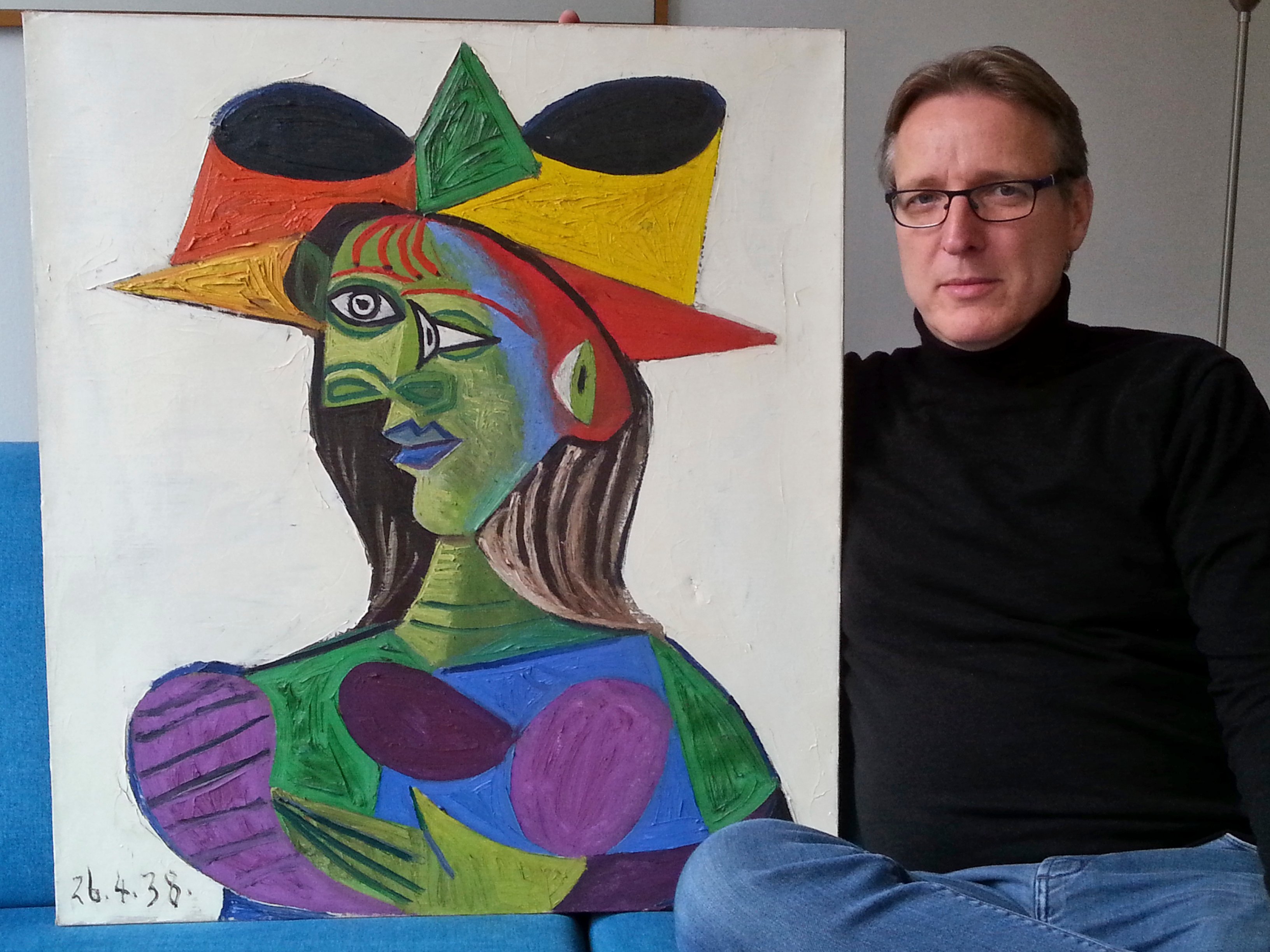
After years of detective work, Dutch investigator Arthur Brand has tracked down a Pablo Picasso painting that was stolen 20 years ago. The recovered painting, Buste de Femme (Dora Maar) (1938) is worth an estimated $28 million, according to Brand, and depicts the artist Dora Maar, Picasso’s lover and muse from 1936 to 1943.
The canvas hung in Picasso’s home until his death in 1973. It’s last legitimate owner was the Saudi billionaire Sheikh Abdul Mohsen Abdulmalik Al-Sheikh, who kept the painting aboard his yacht, Coral Island. It was stolen in 1999 while the vessel was berthed in Antibes, France.
Brand first got wind of the painting’s whereabouts in 2015, when he heard a rumor that a Picasso stolen from a ship was making the rounds in the Dutch underworld. He believed it was the Maar canvas, long feared to have been destroyed, and began putting out inquiries.
Brand has previously helped track down a pair of Medieval carved reliefs stolen from Spain in 2004, artworks stolen from the Netherlands’ Westfries Museum in 2005, paintings by Salvador Dalí and Tamara de Lempicka taken from a Dutch museum in 2009, and “Hitler’s Horses,” a pair of life-size bronzes by Nazi sculptor Josef Thorak, which had been missing for decades. But this Picasso was especially difficult to locate because “it was never published, there were almost no pictures of it, and it had never been in a museum,” Brand told the New York Times.
Dutch art historian and art detective Arthur Brand, Hoorn mayor Yvonne van Mastrigt, and Ad Geerdink director of the Westfries Museum at a press conference in 2005. Photo: Olaf Kraak/AFP/Getty Images.
It turns out the painting had been used as collateral on the black market, propping up drug and arms deals, perhaps changing hands as many as ten times, the detective claimed. “Two representatives of a Dutch businessman contacted me, saying their client had the painting. He was at his wits’ end,” Brant told Agence France Presse, declining to reveal the names of those involved. “He thought the Picasso was part of a legitimate deal. It turns out the deal was legitimate—the method of payment was not.”
Two weeks ago, the painting was returned, wrapped in a sheet and black garbage bags. “You know it’s a Picasso because there is some magic coming off it,” said Brand to the Associated Press.
Dutch art detective Arthur Brand with Pablo Picasso’s Buste de Femme, a portrait of Dora Maar stolen in 1999 and now recovered by the investigator. Photo by Tetteroo, courtesy of Arthur Brand.
An expert from Pace Gallery in New York quickly authenticated it and, after toasting to its safe return, Brand promptly hung the painting on his wall and “and thoroughly enjoyed it” for the night, he told the Dutch newspaper De Volkskrant. The painting is now in the hands of an unnamed insurance firm, Brand having delivered it to company representative Dick Ellis, a retired British police officer who founded Scotland Yard’s art and antiquities squad.
Brand, who has been called “an art world Indiana Jones in a suit,” has also been investigating the famous 1990 heist at Boston’s Isabella Stewart Gardner Museum. Two years ago, he announced that the missing masterpieces—which include Johannes Vermeer’s The Concert and Rembrandt’s Christ in the Storm on the Sea of Galilee—were in Ireland, but their return has yet to be secured.